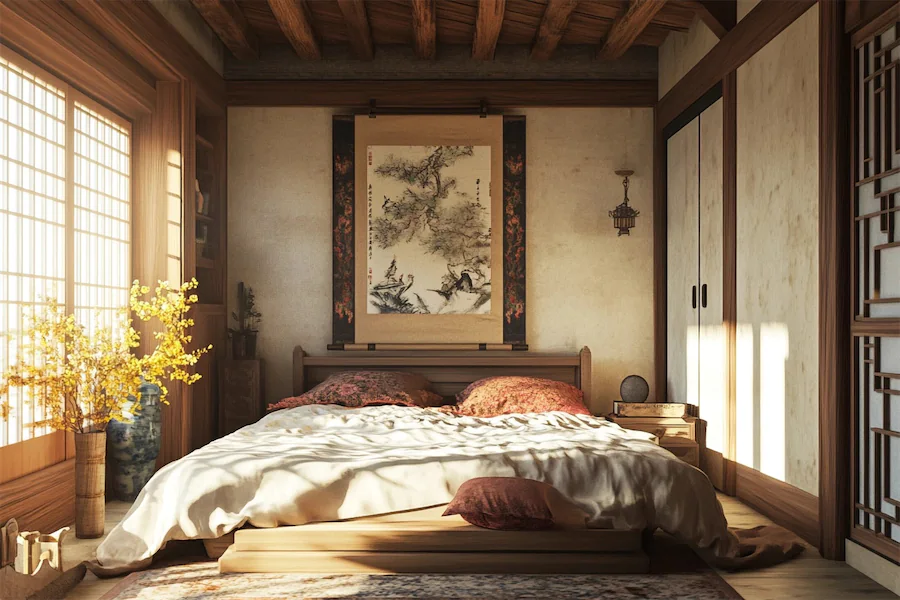A Korean bedroom design seamlessly blends traditional elements with modern minimalism, creating a serene and functional space that reflects Korea’s rich cultural heritage and contemporary aesthetics.
Introduction to Korean Bedrooms
Korean bedrooms emphasize simplicity, functionality, and a strong connection to nature. This design approach fosters a tranquil environment, ideal for rest and relaxation.
History and Origins of Korean Bedrooms
Traditional Korean homes, known as hanoks, feature design principles that harmonize with nature. Key elements include the ondol (underfloor heating system) and the use of natural materials like wood and paper. Sleeping arrangements traditionally involved floor bedding, such as yo (floor mattresses), aligning with the heated floors.
Key Features of Korean Bedrooms
- Minimalist Design: Korean bedrooms embrace minimalism, focusing on clean lines and uncluttered spaces to create a calming atmosphere.
- Natural Materials: Incorporating wood, bamboo, and stone elements fosters a connection to nature, enhancing the room’s tranquility.
- Low-Profile Furniture: Utilizing low or floor-level furniture, such as platform beds or floor mattresses, reflects traditional sleeping arrangements and contributes to a spacious feel.
- Neutral Color Palette: Employing soft, neutral tones like whites, beiges, and light grays promotes a serene environment conducive to relaxation.
- Ondol Heating System: Traditional Korean bedrooms feature the ondol system, an underfloor heating method that provides warmth and comfort, influencing the preference for floor seating and sleeping arrangements.
Applications of Korean Bedroom Design
- Urban Apartments: Incorporating Korean design principles can maximize space efficiency and create a peaceful retreat within bustling city environments.
- Guest Rooms: Designing guest bedrooms with Korean elements offers visitors a unique and serene experience, showcasing cultural appreciation.
- Meditation Spaces: The minimalist and natural aspects of Korean bedrooms make them ideal for meditation and mindfulness practices.
Considerations When Designing a Korean Bedroom
- Simplicity: Maintain an uncluttered environment by selecting multifunctional furniture and minimizing decorative items.
- Natural Light: Maximize natural light to enhance the room’s airy and open feel, using sheer curtains or blinds to control brightness.
- Cultural Elements: Incorporate traditional Korean design aspects, such as sliding doors or calligraphy art, to add authenticity and cultural depth.
Conclusion
A Korean bedroom design offers a harmonious blend of tradition and modernity, creating a tranquil space that promotes relaxation and reflects cultural heritage. By focusing on minimalism, natural materials, and functional design, one can create a serene retreat inspired by Korean aesthetics.
